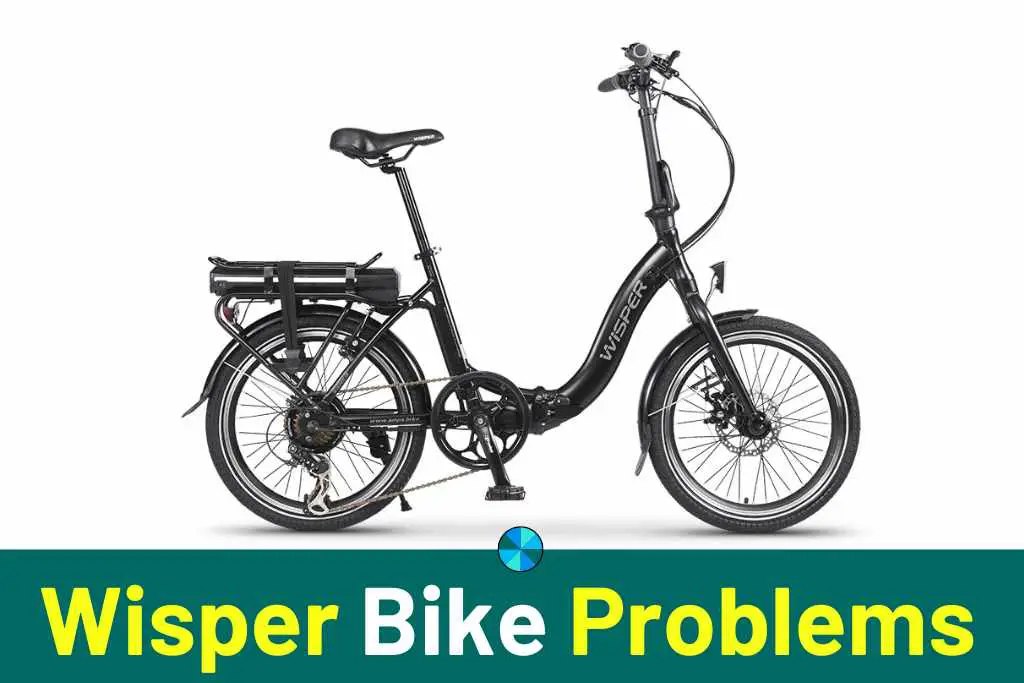Do you know what the common problems with Wisper bikes are? Well, you are at the perfect place to find the answer to such a question.
Riding your Wisper bike should be fun, but that doesn’t mean you’ll never run into some common issues that might have you wondering if your cycle is broken. Most of the time, there are simple solutions to these regular issues.
3 common problems with Wisper bikes:
- Top Speed is Too Slow
- The power is On, But the Motor Isn’t Working
- Driving Shorter Distances on Full Battery
Let’s discover why your Wisper bike might be displaying these problems and some solutions to try, as well as some maintenance tips so you can prevent these problems from popping up.
3 Common Problems with Wisper Bikes (Troubleshooting)
Here are some of the most common problems you might run into with your Wisper bikes and some simple ways to troubleshoot the issues so you can get back to enjoying your bike.
1. Top Speed is Too Slow
If you’re doing everything right to reach top speeds but the bike isn’t moving as fast as it should be, there are a few reasons, such as a low battery voltage.
If you test your battery and find that it’s less than 12.2 volts, you have low voltage, which means you need to charge the battery. If the battery is fully charged but the voltage is still low, you need to replace the battery.
Another reason could be that you are reaching the top speed, but there’s an issue with the handlebar display that reads like you’re going slower. If there’s an issue with the handlebar display, you need to call the service to check it and offer solutions.
There could also be damage to your motor driveline. The driveline is how power travels from the motor and transmission to the wheels, which includes the axles, wheels, driveshaft, differentials, and joints.
These parts of the bike take the most force and are most likely to sustain damage. You will need to call the service to inspect and offer repairs.
Read also >> 8 Common Problems With Electric Bikes (Do This Before…)
Read also >> How Long Do Chainrings Last? (All You Need To Know)
2. Power is On, But the Motor Isn’t Working
Seeing power to the rest of your bike’s components but not getting the motor to work can be a frustrating issue to deal with.
Most likely, this problem is because there is a connection error with your battery. If so, you’ll need to reinstall the battery.
You’ve likely removed and reinstalled your battery before whether to charge it or store it when you’re not using your bike, but in case you haven’t, here are some basic directions.
To remove the battery:
- Put the key that came with your bike in the battery’s keyhole. Place your palm underneath the battery and turn the key to unlock the battery.
- Use your thumb to detach the battery from the bike while the key is in the “unlock” position.
- After letting the battery down, gently remove it from the bracket.
To reinstall the battery:
- Place the battery in the frame from the bottom up.
- Make that the connectors in the frame are in alignment.
- When it latches into place, raise the battery into the frame.
- Remove the key after turning it to the “lock” position.
The connection problem could also be because of a fuse, which you can easily replace, and the battery should work properly again.
If you’ve tried the above solutions and your motor still isn’t working, it could be because of motor connection damage.
Vibrations from riding or transporting your bike can cause connections to falter or break, and you will need to call the service to inspect your motor and offer repairs.
It could also be due to issues with the handlebar controls, which you will again need to call the service to check for problems and give you a solution.
3. Driving Shorter Distances on Full Battery
Getting less distance on a full battery can end up with you stranded on the side of the road or worse. One of the key reasons you might be getting less distance is that your tire pressure is too low, and you can quickly check the pressure and add more air if necessary.
You can also have a charger fault, which means that it displays a full charge when there isn’t. You should fully charge your bike or check the charger for damage or other issues.
If you’ve had your Wisper bike for a while, then it may be that the battery has lost capacity, and you will need to replace it.
If there doesn’t seem anything wrong with the bike, it might be because of how and where you’re riding it.
Constantly stopping or going uphill can drain the battery quicker than on flat, open roads. Even riding into strong winds can lessen your battery life and using the power assist may help.
How to Care for Your Wisper Bike
An e-bike is, first and foremost, a bicycle. Thus, it needs the same fundamental maintenance as a regular bike, which is the first thing to understand about them.
Here are some of the areas to do routine maintenance on:
- Check to see if the bike shop has expertise with the model of e-bike you have. If you ride frequently, have the shop tune and examine your bike twice a year.
- Anytime you have a chance, top off the battery. As you ride, be mindful of your energy usage since only superhumans should attempt to pedal an e-bike with a low battery. Many bikes have eco modes that can help preserve the bike’s battery.
- Maintain correct tire inflation. An e-bike requires the stable ground to ride on. Make sure you are able to fix a flat if necessary.
- Regularly inspect the brakes. You want the pedal-assist power of your e-bike to match its stopping power.
- Check, lubricate, and clean your chain regularly. E-bikes place a heavy demand on this crucial drivetrain system component.
Conclusion
Most of the time, these issues are easy to diagnose and have straightforward solutions so you can get back to enjoying your Wisper bike.
Keeping up the maintenance of your bike is the best way to ensure it is ready whenever you want it.
References
https://www.rei.com/learn/expert-advice/intro-to-electric-bike-maintenance.html

